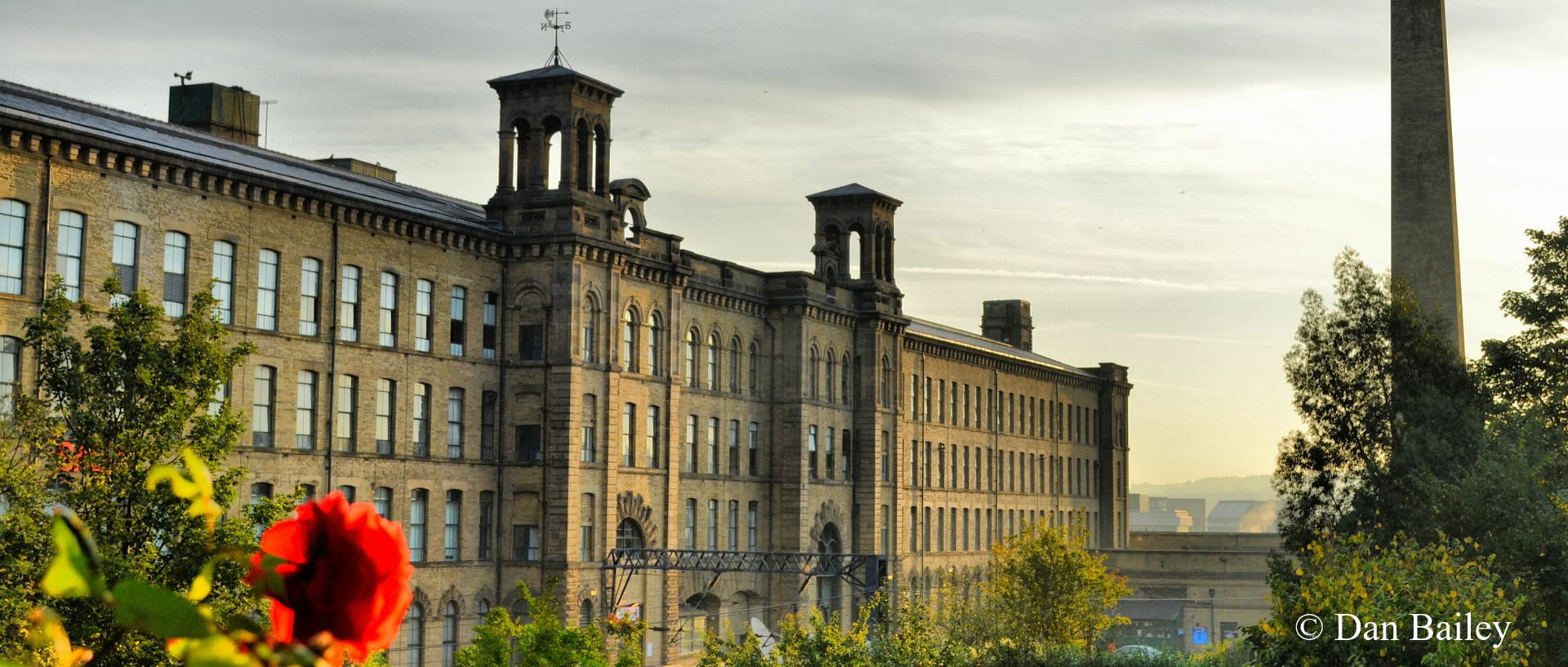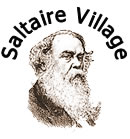|
Housing (built between 1854 - 1868)
Located at the bottom (north end) of Victoria Road
Listed Grade II*
These notes are extracted from the Word Heritage Committee Nomination Document, 2001. You can download this comprehensive document from this website.
[You will need Acrobat Reader. If you don't have Acrobat Reader, you can download the software FREE. GET ACROBAT READER - FREE!] GET ACROBAT READER - FREE!]
Photographs and images are additional.
Until the completion of the housing, workers were brought into work by special train each day. The houses in Saltaire are a fine example of 19th century hierarchical workers’ homes (plans and drawings of the different designs are held by the City of Bradford Metropolitan District Council and Saltaire Studies Centre). They were built by Lockwood and Mawson between 1854 and1868.
 Click on image to magnify. Click on image to magnify.
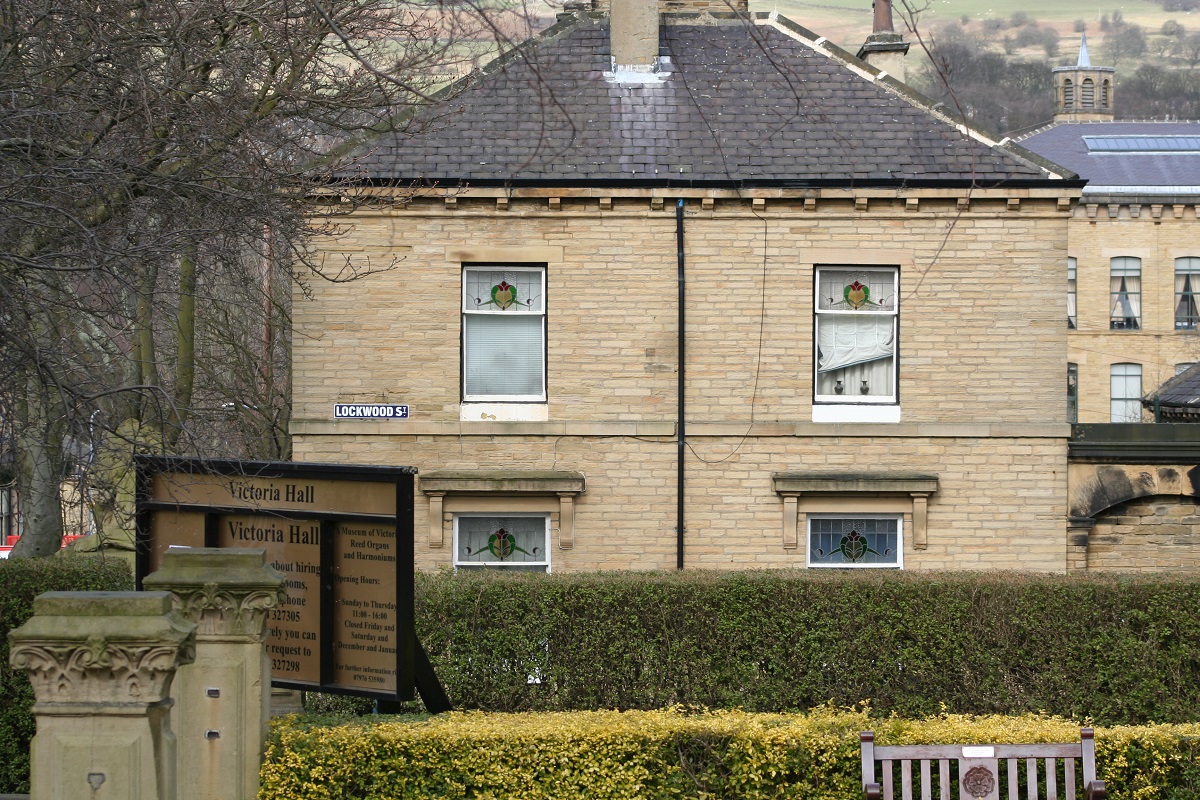
Looking north from the grounds of Victoria Hall, originally known as Saltaire Institute.
All the properties are of hammer-dressed stone with Welsh slate roofs. Each was equipped with its own water and gas supply and an outside lavatory. House sizes vary, from ‘two-up two-down’ terraces to much larger homes with gardens for the managers.
The workmens' houses are all ‘through terraces’, allowing light and air to penetrate and allowing soil to be removed from the privies (lavatories) without passing through the house. All the houses are laid out on a formal grid pattern.
Building Programme for Saltaire
The first phase of housing, in twelve parallel streets running at right angles from a wider road (Caroline Street) provided homes for1000 people occupying the 14 shops and163 houses and boarding houses. This initial phase of building (1854-57) had the terraces running north-south, but subsequent phasesof development switched the orientation to east-west. The monotonous rhythm of the unbroken frontages of the terraced rows was interrupted by the insertion of three-storey buildings, which were originally lodgings for single people.The street names acknowledged members of the Salt family, the Royal family and the architects of the village:
- Victoria Road, Albert Road and Albert Terrace were named after Queen Victoria and her consort, Albert.
- Caroline Street was named after Salt’s wife.
- Titus, William Henry, George, Amelia, Edward, Fanny, Herbert, Whitlam, Mary, Helen and Ada Streets were named after his sons and daughters.
- Katherine, Jane and Dove Streets were named after his daughters-in-law.
- Gordon Terrace, Shirley Street and Harold Place were named after his grandsons.
- Constance Street was named after his granddaughter.
- Lockwood Street and Mawson Street were named after the architects of Saltaire.
- Myrtle, Daisy and Fern Place were named after maids from the Salt household. [Note from webmaster: there is no evidence at present that Myrtle, Daisy and Fern were maids. It is also thought that these streets were simply named after popular Victorian flowers.]
 Click on images to magnify. Click on images to magnify.
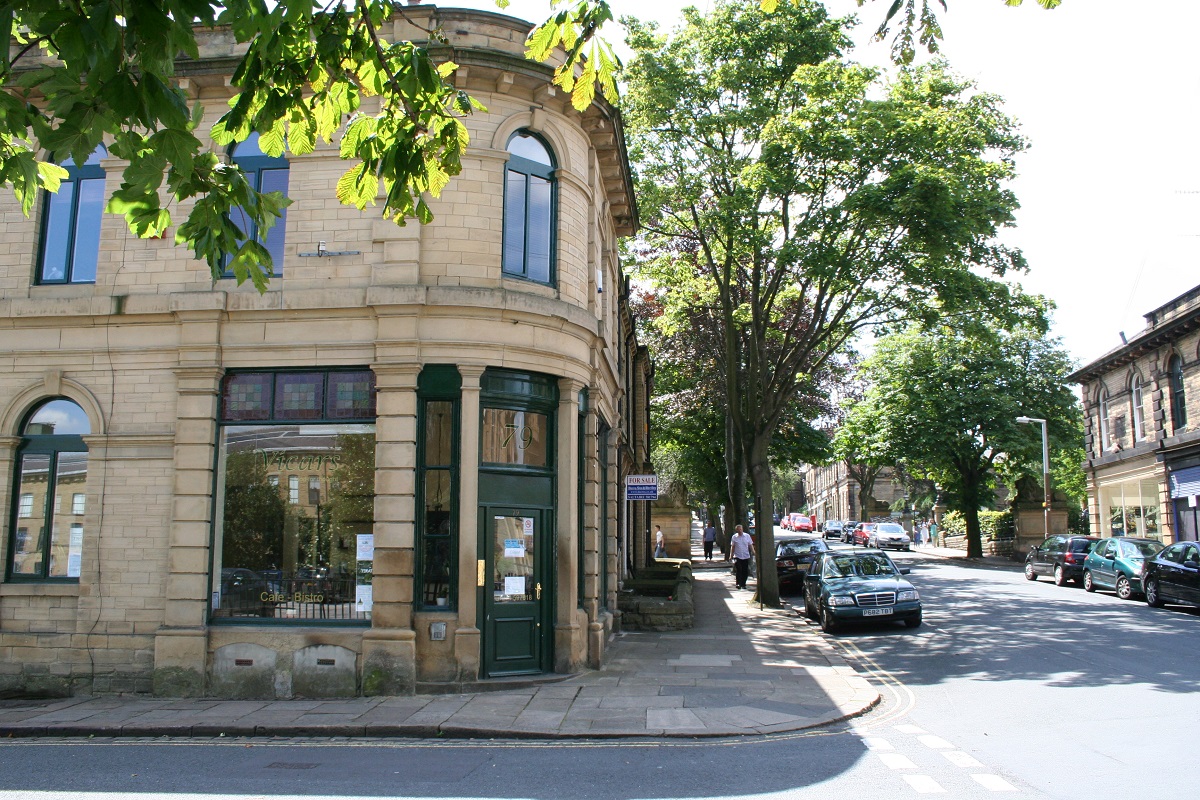
Victoria Road is a mixture of houses and shops.
Looking south up Victoria Road before the trees were felled.
The properties in Amelia Street are typical of Lockwood and Mawson’s early housestyles, being relatively plain and austere in design. They open straight onto the pavement, with a scullery to the rear of the front room, two bedrooms upstairs, a small cellar and a back yard. The buildings at the end of the terraces were three storeys high and were designed to be boarding houses.They had no back yards and, later, after they were converted into houses, some rear sections were demolished in 1937 to create private space to the rear of the properties,and to allow better ventilation. At the end of each row, two houses were built in a back-to-back style, but with two open elevations.
 Click on images to magnify. Click on images to magnify.
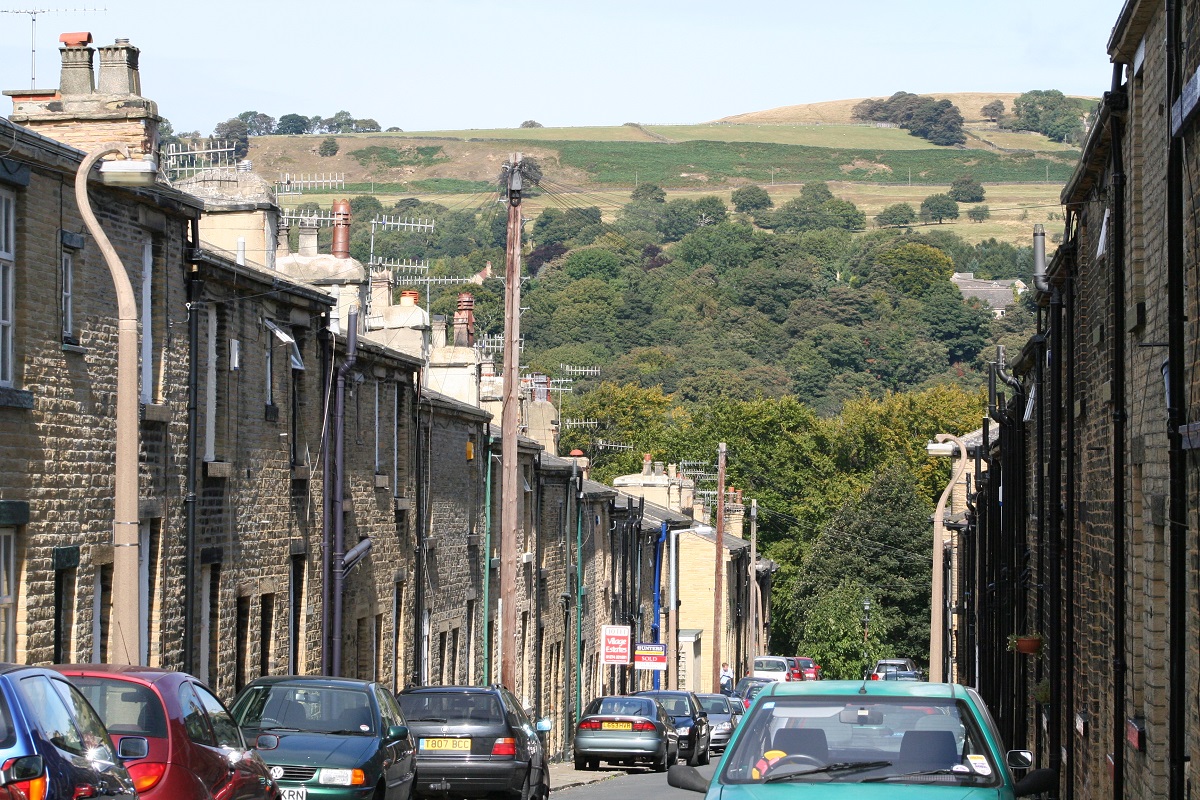
Looking north down Ada Street. Plain, unadorned housing style.
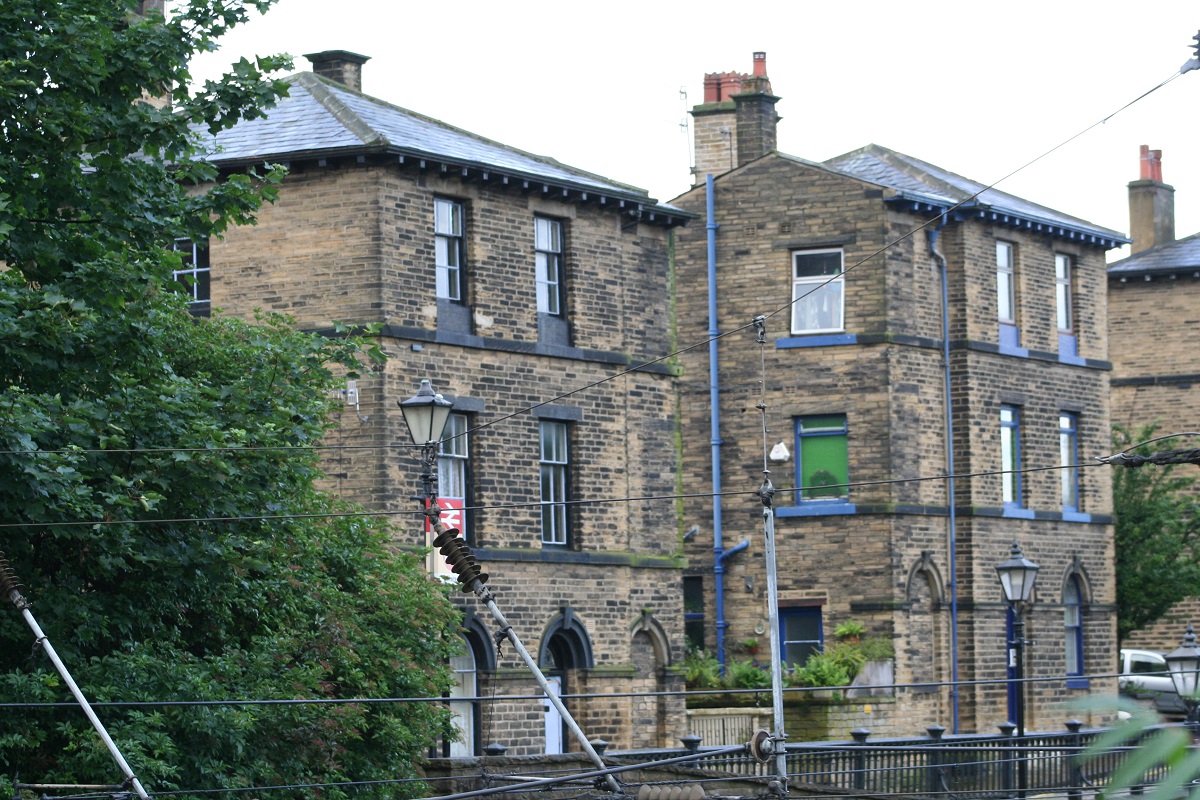
Three storey houses on Albert Terrace, designed to be boarding houses.
Titus Street was planned as one of the wider main thorough fares in the village. Its houses represent an improved image for the company’s workmens' houses, having more architectural detail to door and window surrounds, and the end properties have overhanging eaves to the gables. The orientation of the street (east-west) gave a better visual appearance to the village when viewed from the Leeds Turnpike (road), with gardens and house fronts evident, rather than the gable ends of the long terraces. 37 Titus Street is one of the typical small shops provided in the later development. Many of these remain today, retaining their original frontages.
 Click on images to magnify. Click on images to magnify.
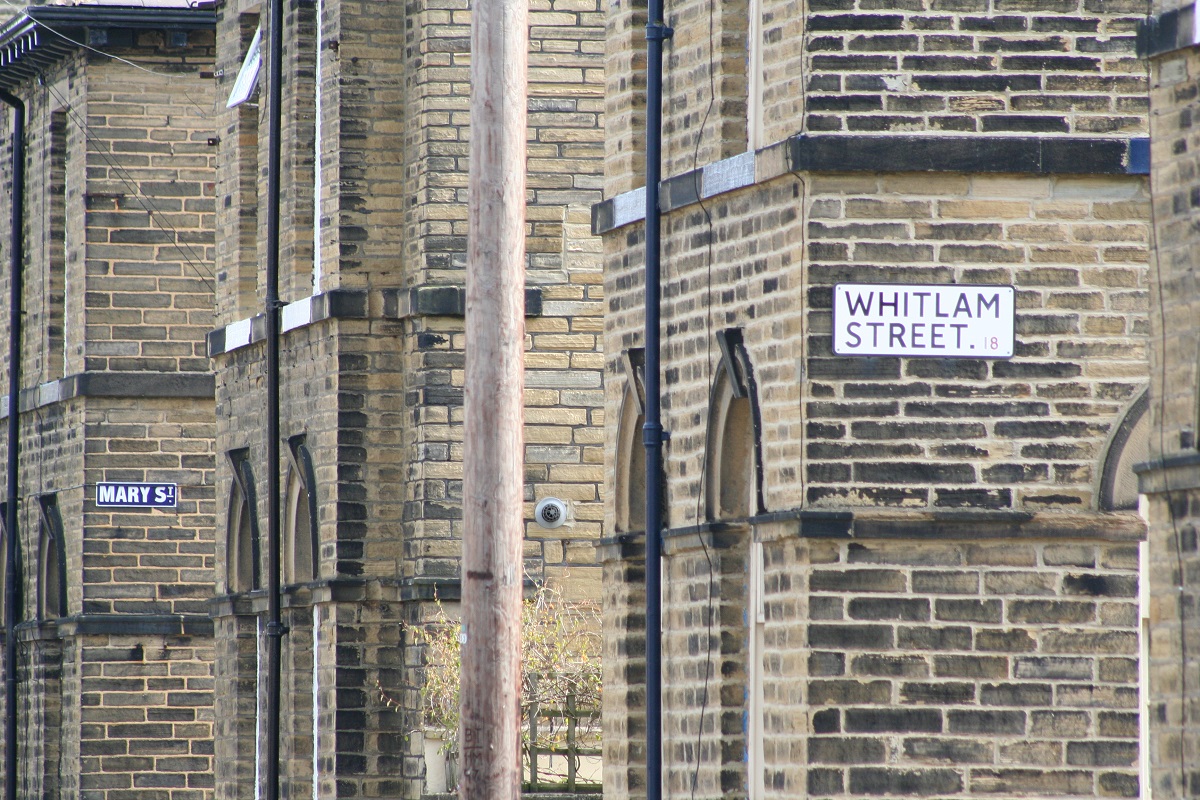
Showing Mary Street and Whitlam Street.
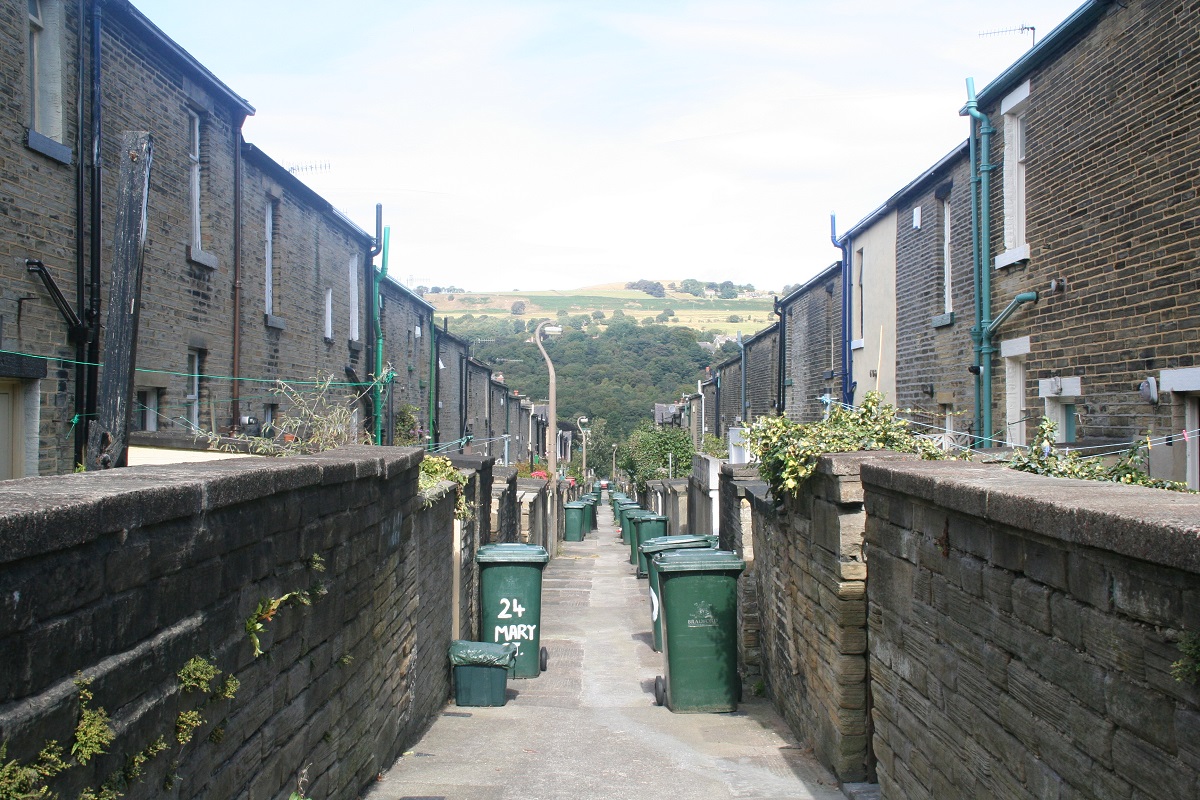
Mary Street, back alley.
The next stage of development included Whitlam, Helen, and Mary Streets. These were completed in 1857, and consisted of terraces of workers’ cottages, built to the same robust unadorned style as the first stage. The terraces have end houses that are slightly larger, break forward and are of two bays with round-arched and archivolted doorway and window. The two square-headed first-floor windows are on a cill band. The rest of the houses each have a plain doorway and one window to each floor. Some have inserted bathroom windows. The end houses were endowed with finer architectural detailing due to their visual importance to Titus and Caroline Street.Subsequent housing had improved facilities and more architectural pretension, which reflected the Victorian’s growing love of detail and ornamentation. Jack Reynolds (1983) also notes that ‘Salt and his architects decided that the reputation of the firm required a better image than that provided by the rather dour accommodation being offered to the workmen. The visual impact of pleasant houses running along the (Leeds and Bradford) roadside was much better than one which would have been provided by a view of long and regular terraces stretching away down the hill.’
Constance Street and Shirley Street are examples of this next phase and style of building. They run along the contours of the hillside and its houses have more generous proportions and greater decorative detailing than the early homes. Fanlights with stepped reveals surmount the front doors, and the ground floor windows are all round arched and archivolted.
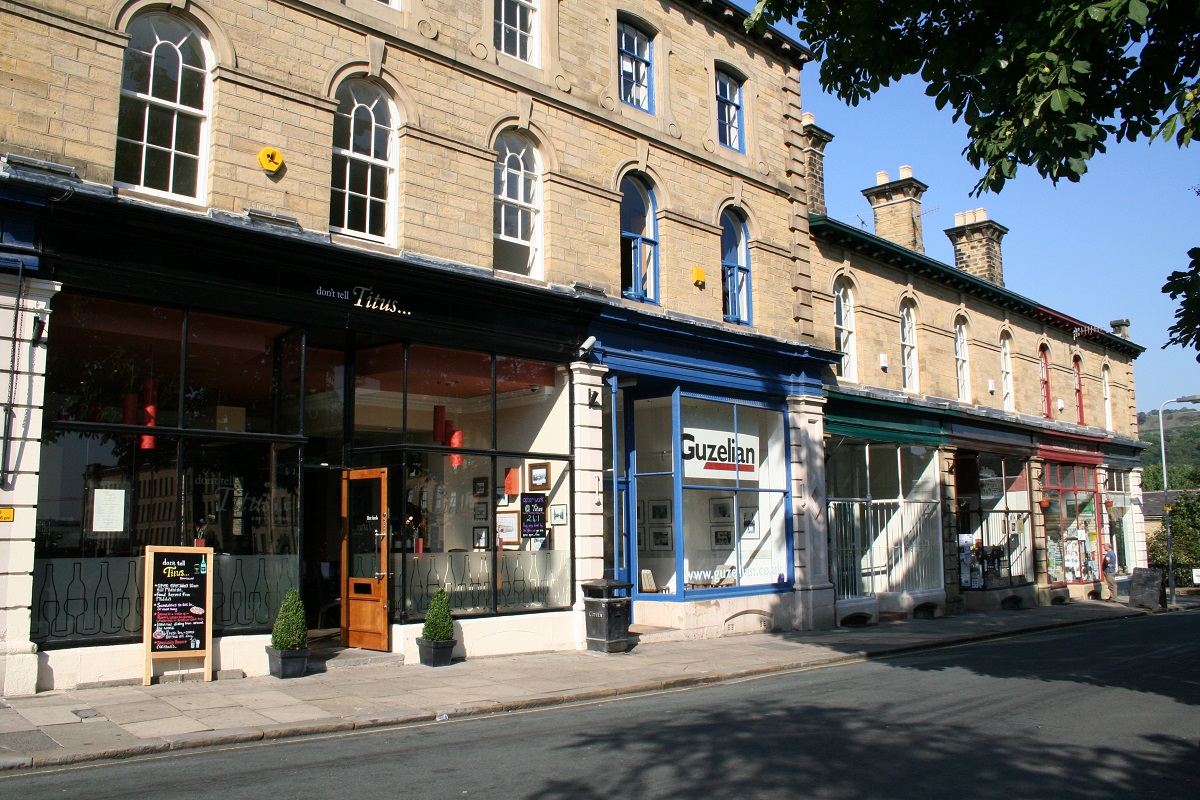
Victoria Road. September 2006.
A row of shops fronted Victoria Road, and provided living accommodation above the shops.William Henry Street and George Street had terraces of overlookers’ houses with taller boarding houses built at each end. The overlookers’ houses were the best appointed, having wider frontages and small front gardens, round-arched ground-floor openings with dressed stone heads. Internally they provided a sitting room, kitchen, scullery, cellar and three bedrooms. The taller, middle houses had four to six bedrooms. The next stage of housing, bounded by Caroline Street and Titus Street, was completed in 1857 as workmen’s homes and the majority were extremely plain in design, but still provided excellent standards of accommodation for the period.
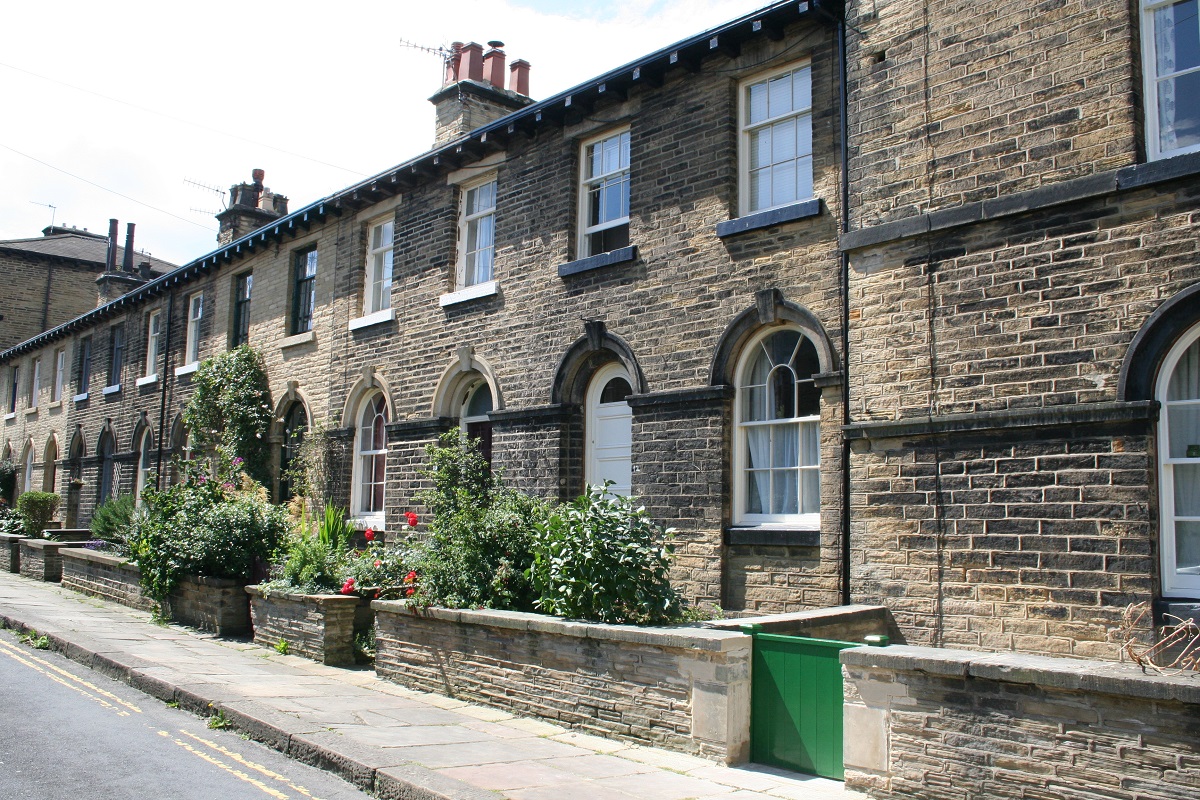
George Street. Small front gardens and a back yard. Decorative architectural detail.
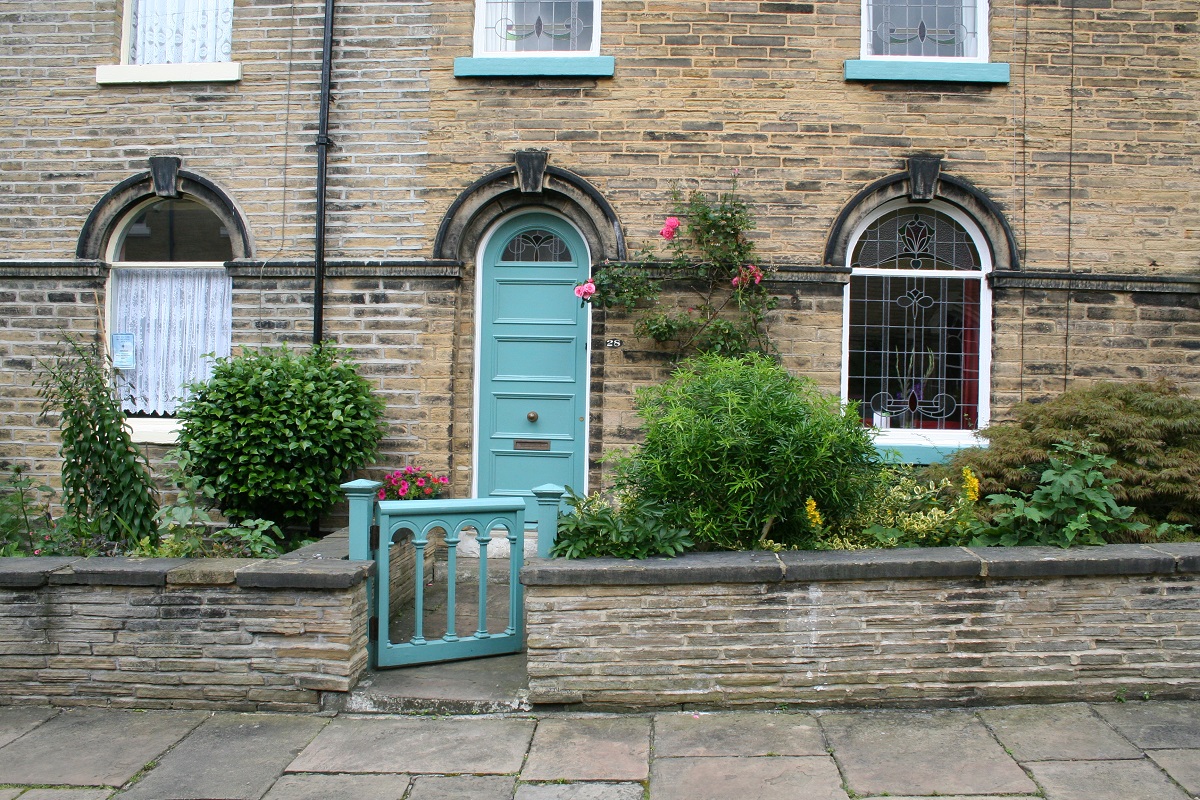
George Street. House with original door. Windows and transom window replaced in the 1930s following the sale of houses to private ownership.
 Click on images to magnify. Click on images to magnify.
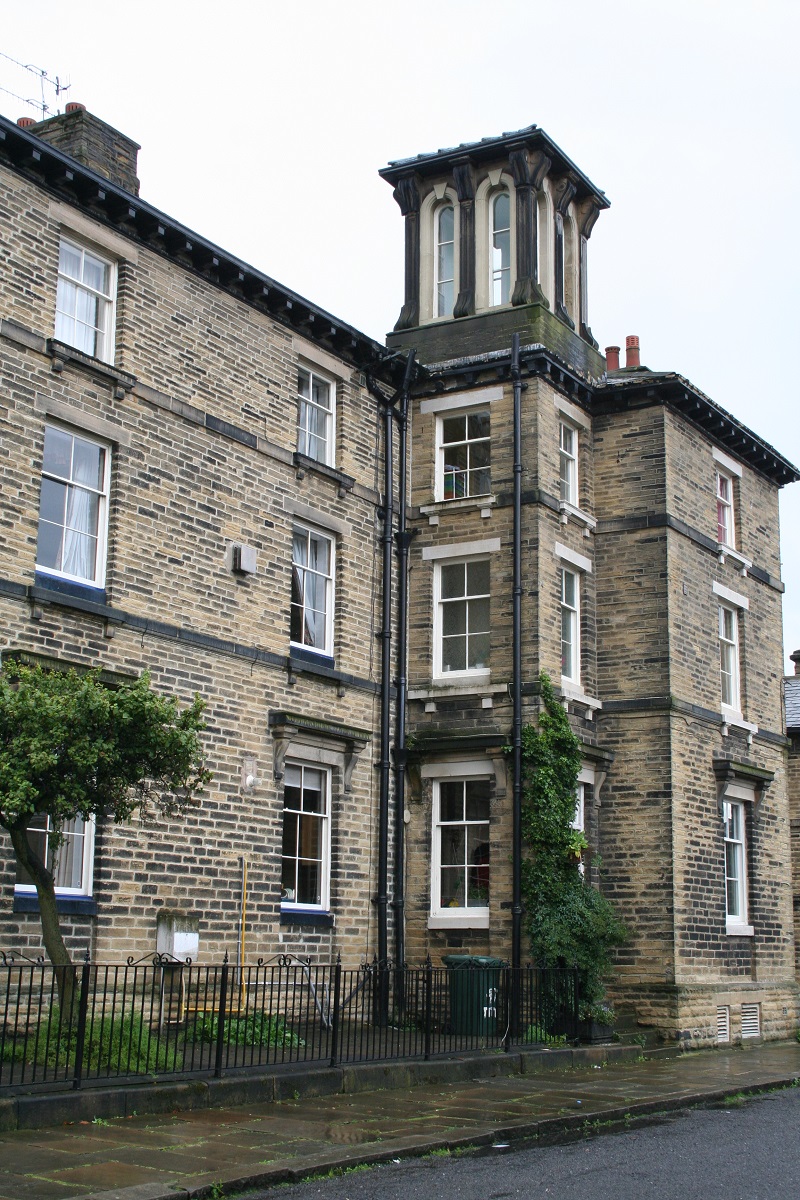
The "watch tower" house on the junction of Titus Street and George Street.
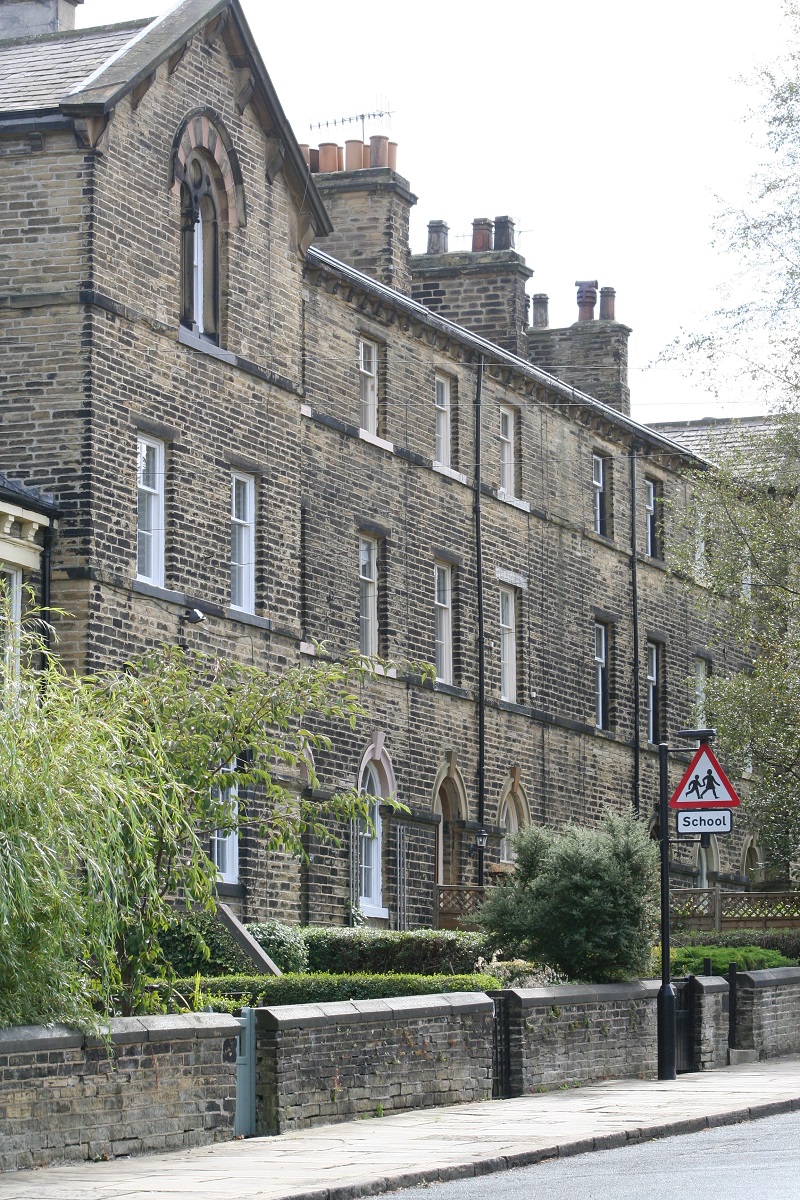
Larger style houses on Albert Road on the periphery of the village boundary. Views to the west (before further building development) would have been fields and countryside.
Albert Road was built in 1868 as part of the final phase of housing, in which senior executives of the firm lived in twenty-two large, well-appointed properties with more elaborate gothic detailing and larger gardens. They are symmetrical in arrangement, with the middle properties having two central doorways in a single doorcase with pilaster jambs, central engaged colonnette, frieze and cornice. A gable bay breaks forward from each house, with a two-light Venetian gothic window with central colonette to a blind circle in the tympanum and alternately coloured voussoirs. Typical residents of these houses in the 1870s were the Minister of the Congregational Church, the Registrar of Births, Deaths and Marriages, schoolteachers and foremen.
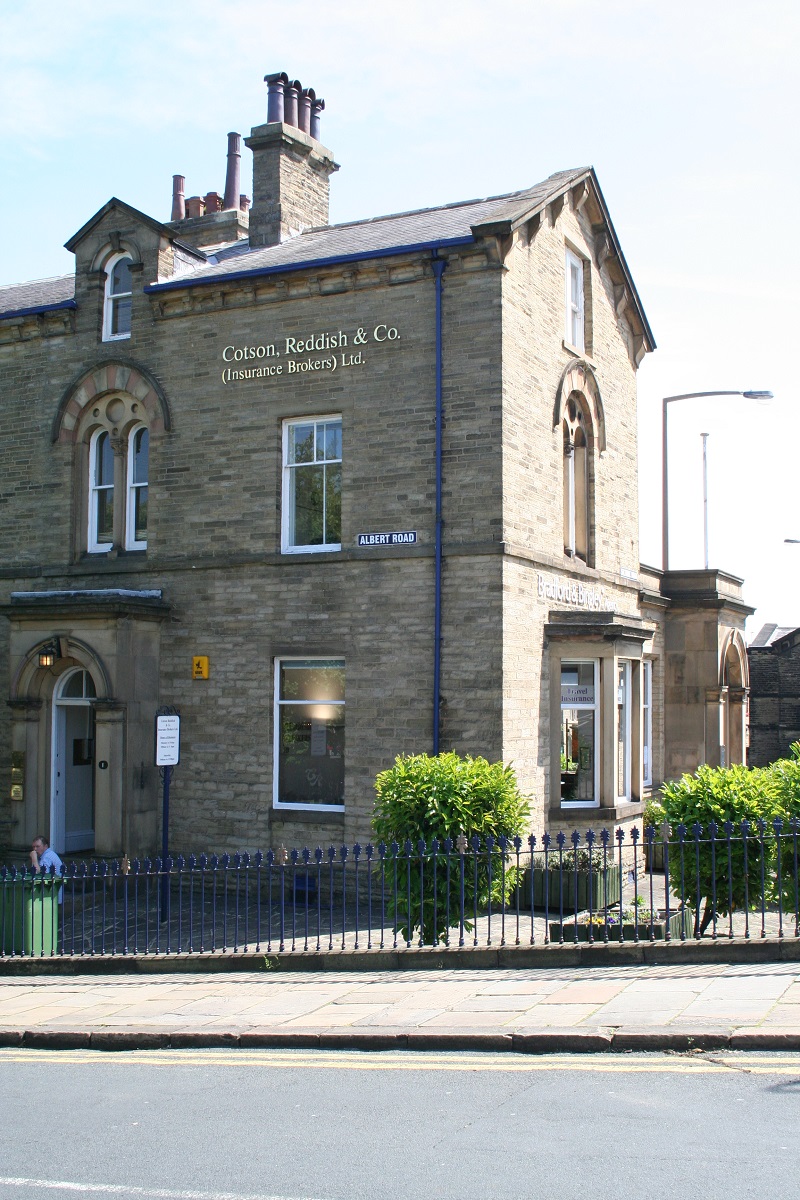
1 Albert Road, Saltaire
1 Albert Road is the only detached house in the village and it is the biggest. In the 1870s, it was occupied by Frederick Wood, the company’s chief cashier. The two-storey building with attic has a central round-arched porch with pilaster jambs and Venetian gothic windows (similar to others on Albert Road) and a gabled dormer with round-arched lights which breaks through the eaves.By 1871 Saltaire provided homes for 4300 people in just twenty-five acres.
Houses - present
The houses’ condition and the extent to which original features have survived vary greatly throughout the village. A total of £1.225 million (query?) was reported as being spent in the World Heritage Committe Nomination File 2001, by the former Town Scheme and later, the Conservation Area Partnership Scheme reinstating and repairing original features. However, there is still a substantial amount of work required and it is very much a long-term aim to bring all of the properties back to the original appearance. The houses are generally fully occupied, and the area is much sought-after in the property market.
|
